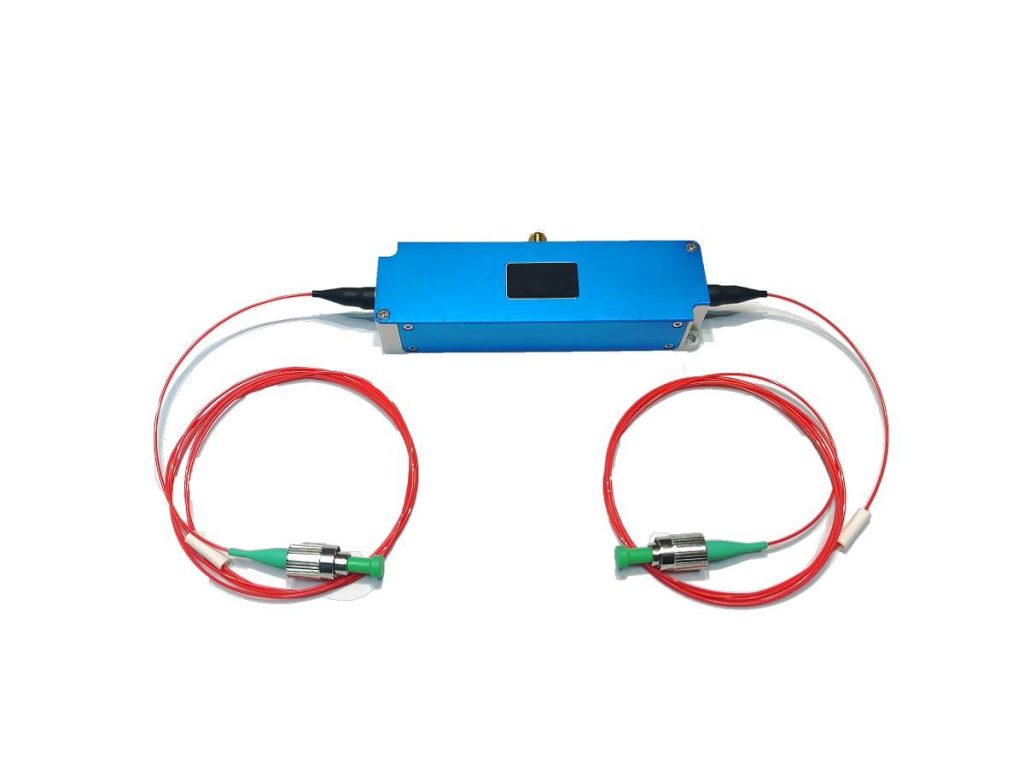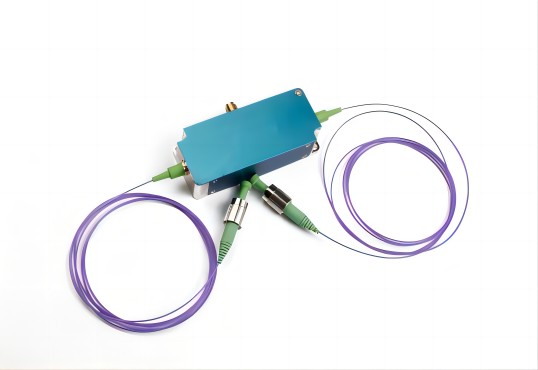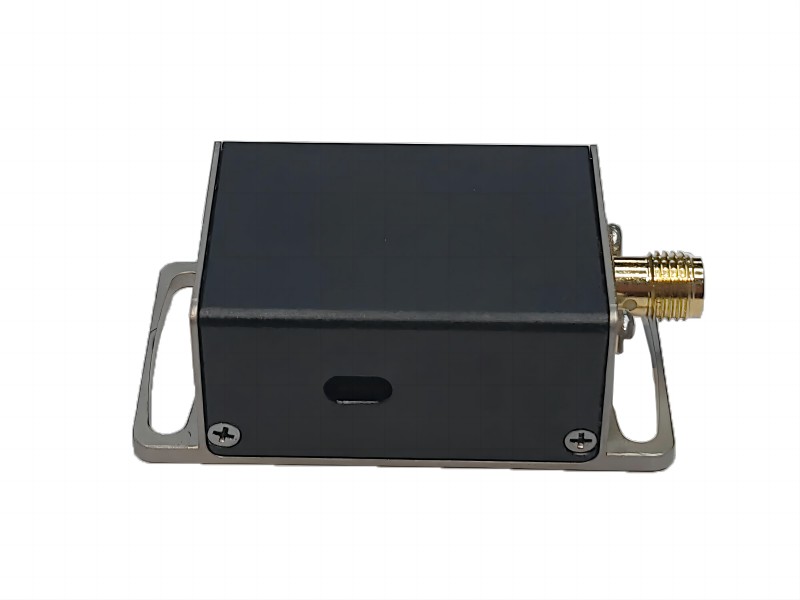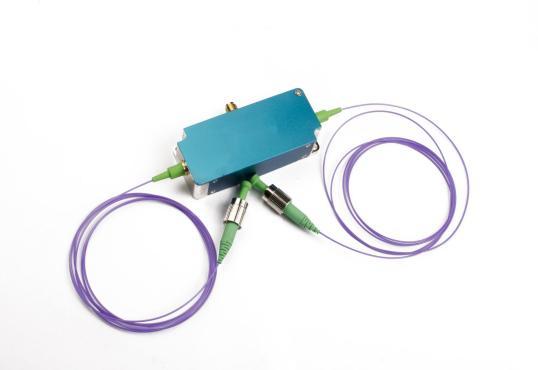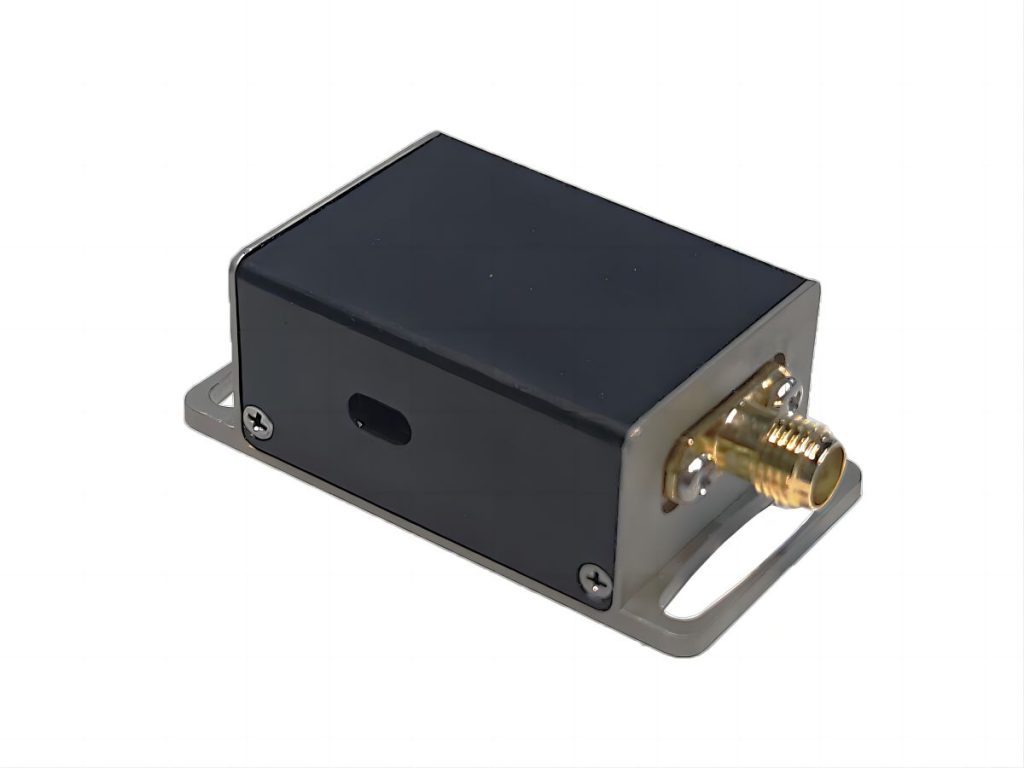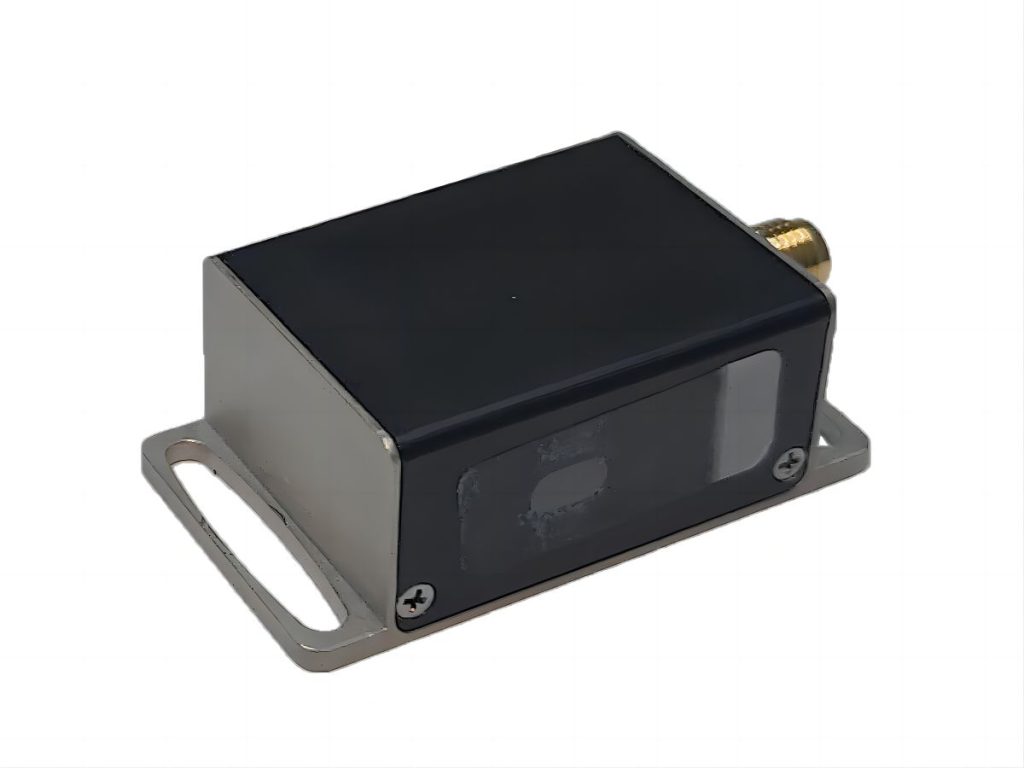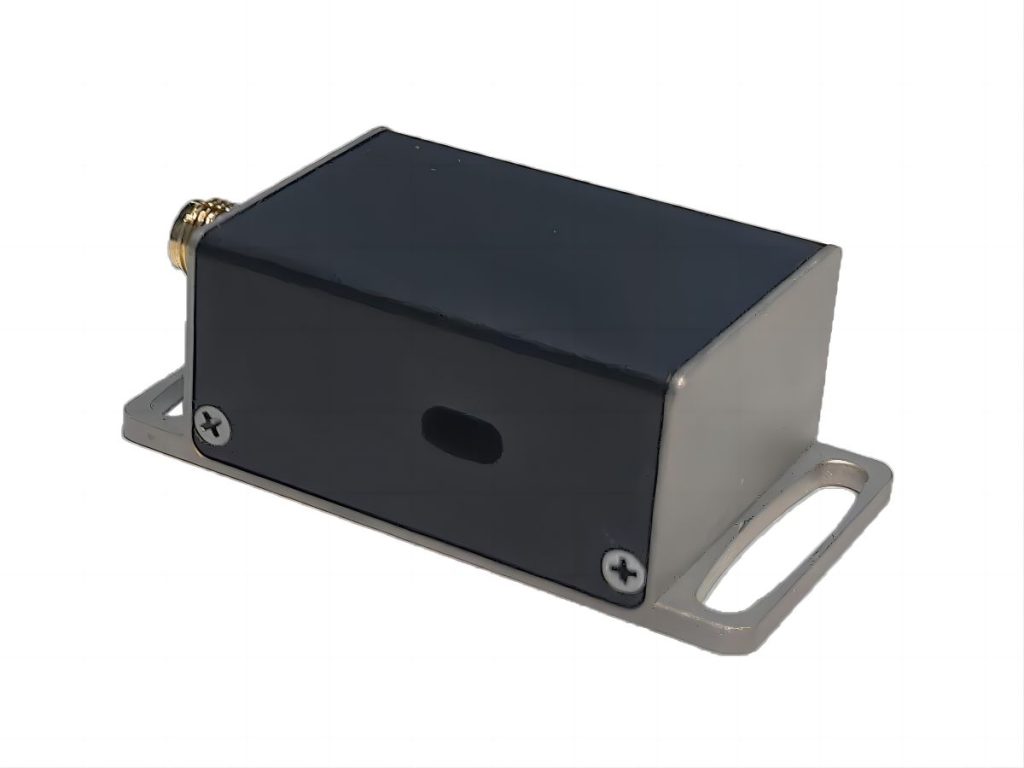Application of Acousto-Optic Modulator in Laser Intensity Control
Laser technology is widely used in industrial processing, scientific research, medical equipment and communications, and precise control of laser intensity is a key requirement for many applications. As an efficient and high-speed optical modulation device, Acousto-Optic Modulator (AOM) can achieve fast and precise control of laser intensity through the acousto-optic effect. This article will introduce the working principle, laser intensity control method, advantages and characteristics, and typical applications of AOM in detail, and compare and analyze it with other modulation technologies.
Working Principle of Acousto-Optic Modulator (AOM)
AOM is based on the acousto-optic effect, that is, when ultrasound propagates in an optical medium (such as TeO₂ crystal or fused quartz), a periodic refractive index change is formed, which is equivalent to a dynamic “phase grating”. When the laser beam passes through the medium, Bragg diffraction occurs, generating multiple diffraction orders (usually dominated by zero-order and first-order diffraction).
Diffraction light intensity control: The intensity of the first-order diffraction light is closely related to the applied radio frequency (RF) driving power. Adjusting the power of the RF signal can change the intensity of the output laser.
Frequency modulation (optional): Changing the RF frequency can adjust the angle of the diffracted light, but the intensity control mainly depends on power regulation.
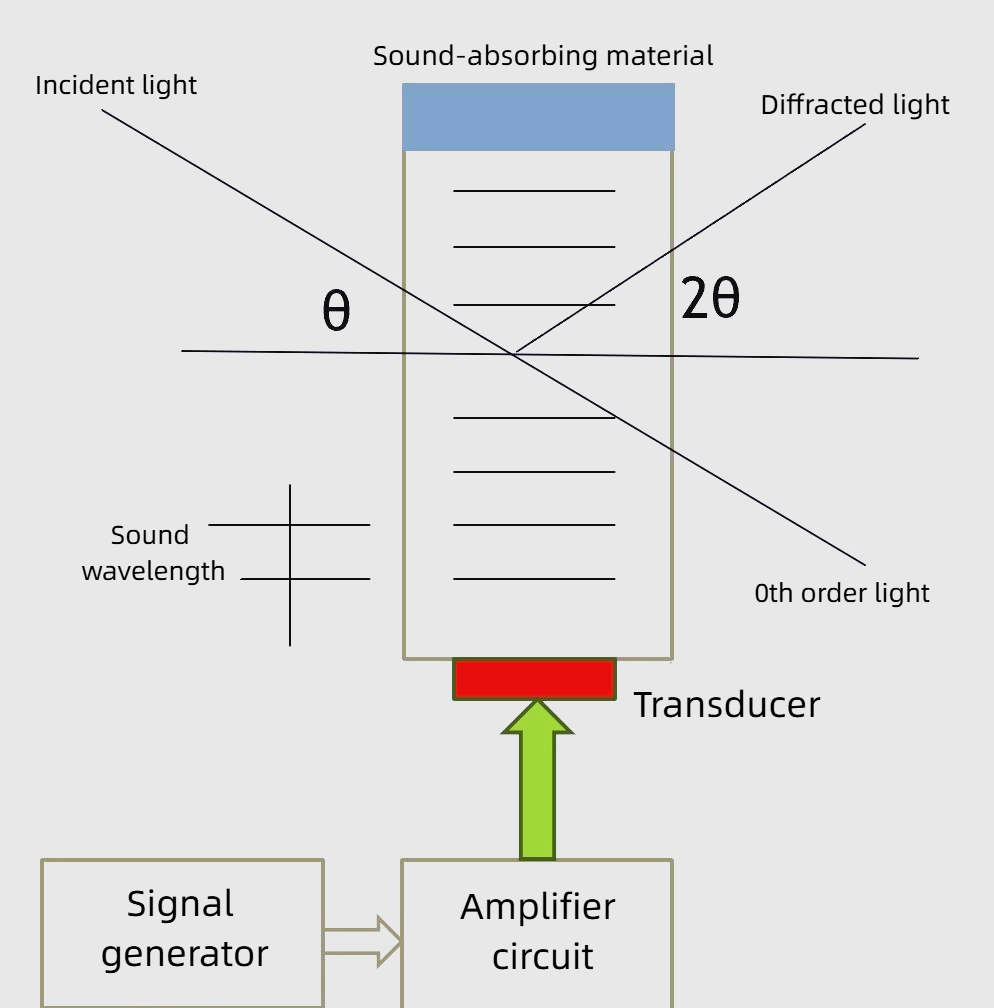
Key Methods For Laser Intensity Control
(1) Radio frequency (RF) drive signal adjustment
RF power adjustment: The diffraction efficiency (first-order light intensity/incident light intensity) is approximately linearly related to the RF power. By adjusting the voltage amplitude of the RF driver (such as 0~10 V analog quantity) or power output (typical 50Ω impedance matching circuit), the laser intensity can be quantitatively controlled, and the adjustment resolution can reach within 0.1%.
Modulation waveform:
- Analog modulation: When a continuous voltage signal (such as sawtooth wave or sine wave) is input, the RF driver outputs an RF signal with a corresponding amplitude change to achieve continuous linear modulation of the laser intensity, which is suitable for spectral scanning and light intensity gradient experiments.
- Digital modulation: Using a TTL pulse signal (3.3 V/5 V level) to control the RF switch, a pulsed laser with a nanosecond rising edge (such as a 10 ns pulse width) can be generated, which is typically used in the distance gating technology of LiDAR.
(2) Optical path optimization
Bragg angle incidence: The laser incident angle must strictly meet the Bragg condition (θ_B = arcsin (λ/(2Λ)), where λ is the wavelength of light and Λ is the wavelength of ultrasound in the acousto-optic medium) to achieve efficient coupling of momentum and energy. For example, in a fused silica AOM, for a 532 nm laser, the Bragg angle is about 0.5°, and an angle deviation of more than 0.1° will cause the diffraction efficiency to drop by more than 10%.
Diffracted light separation: Use an aperture (aperture adjustable to 50 μm) or a spatial filter (such as single-mode optical fiber) to screen the first-order diffracted light and suppress the interference of zero-order light (undiffracted light) and higher-order diffracted light. For example, in cold atom experiments, the residual zero-order light will cause heating of the atomic cluster, and the zero-order light intensity needs to be suppressed to less than 0.1% of the first-order light through an aperture.
(3) Closed-loop feedback control (improving stability)
Photodetector supervision: Utilizing a beam splitter, a segment of the output light is collected and its intensity analyzed. The results are processed by a photodiode which subsequently provides feedback to the system, for example, PID controllers that adjust RF power dynamically responding to AOM thermal drifts or other fluctuations of the laser components.
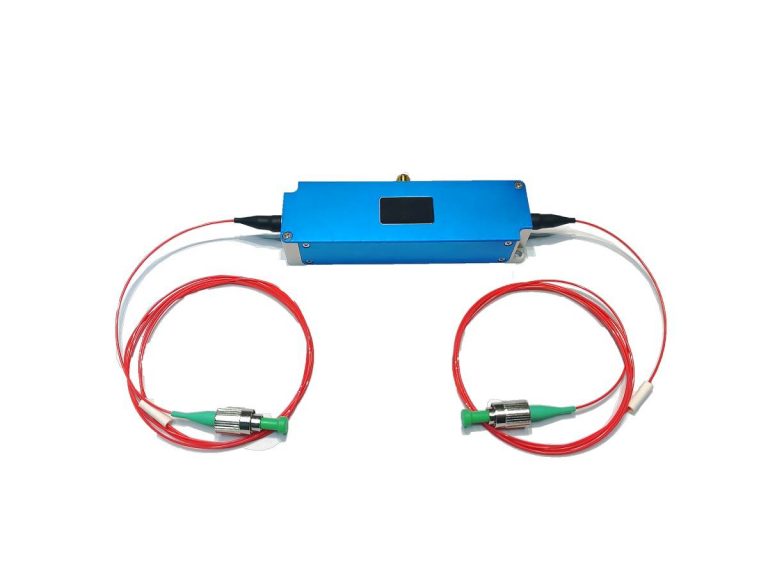
Advantages of AOM in Laser Intensity Control
| Features | Advantages |
| High-speed modulation | The response time can reach nanoseconds, which is suitable for high-frequency applications such as laser pulse shaping and Q switching. |
| No mechanical parts | No wear, long life and high reliability. |
| Wide dynamic range | Can achieve continuous adjustment from completely off (zero-order light blocking) to high transmission. |
| Low insertion loss | High efficiency design (diffraction efficiency is usually 70%~90%), suitable for high power laser applications. |
Typical Application Scenarios
(1) Laser intensity stabilization system
Based on the feedback control mechanism, it realizes high-precision stability of laser output power. Its core is suitable for precision measurement fields (such as Michelson interferometer, gravitational wave detection, etc.) and optical experimental scenarios. By real-time monitoring of light intensity fluctuations and triggering closed-loop regulation, the power stability can be controlled within ±0.1%, meeting the application requirements of atomic clock calibration, micro-electromechanical system (MEMS) detection, etc., which have strict requirements on light intensity stability.
(2) Pulse laser modulation
Using the fast switching characteristics of radio frequency (RF) signals, nanosecond (10⁻⁹ second level) laser pulses are generated, which is irreplaceable in the field of laser radar (LiDAR) and laser processing. For example, in autonomous driving LiDAR, the short pulse laser generated by modulation can achieve centimeter-level ranging accuracy; in micro-nano processing scenarios, nanosecond pulse lasers can be used for high-precision processing such as silicon wafer etching and metal film cutting to avoid material damage caused by thermal effects.
(3) Optical communication and signal modulation
As an external modulation device in optical fiber communication systems, it effectively solves the frequency chirp problem caused by directly modulating lasers. Compared with internal modulation, the acousto-optic modulator (AOM) can maintain signal integrity in high-speed communication links above 10 Gb/s while reducing the impact of dispersion effects. It is widely used in long-distance trunk communications, data center optical interconnection and other scenarios, and is a key component in coherent optical communication systems.
(4) Cold Atoms and Quantum Optics Experiments
Provide ultra-precise light intensity control solutions for experiments such as laser cooling and optical tweezers. In Bose-Einstein Condensation (BEC) experiments, the light intensity gradient can be precisely controlled through AOM modulation, and the temperature of the atomic group can be cooled to the nanokelvin (nK) level; in the field of quantum computing, its sub-millisecond response speed can be used to control optical tweezers to achieve on-demand coupling of quantum bits in ion traps, promoting the development of neutral atom quantum computers.

Comparison with other modulation techniques
| Modulation mode | Speed | Advantages | Disadvantages |
| AOM | Nanoseconds~microseconds | High speed, no mechanical loss | Requires RF drive, high cost |
| EOM | Picosecond to nanosecond | Ultra-high speed, small size | High voltage drive, sensitive to temperature drift |
| Mechanical shutter | Millisecond level | Simple, low cost | Slow speed, mechanical wear |
Notes on use
- Wavelength matching: AOM is optimized for specific laser wavelengths. Changing wavelengths requires recalibration or replacement of devices.
- Thermal management: High-power RF drive may cause AOM to heat up, and heat dissipation design is required to avoid performance drift.
- Diffraction efficiency optimization: Select high diffraction efficiency AOM (such as TeO₂ crystal) and ensure that the incident angle is accurately aligned.
Conclusion
Owing to its speed, precision, and unerring reliability, Acousto-optic modulators (AOMs) are extensively employed for laser intensity modification. Proper regulation of the RF drive signal in conjunction with an optimized optical path and integrated feedback systems enable AOMs to serve a diverse range of applications spanning from industrial processes to advanced scientific investigations. In the future, with the advancement of RF technology and optical materials, the performance and application range of AOM will be further expanded.

